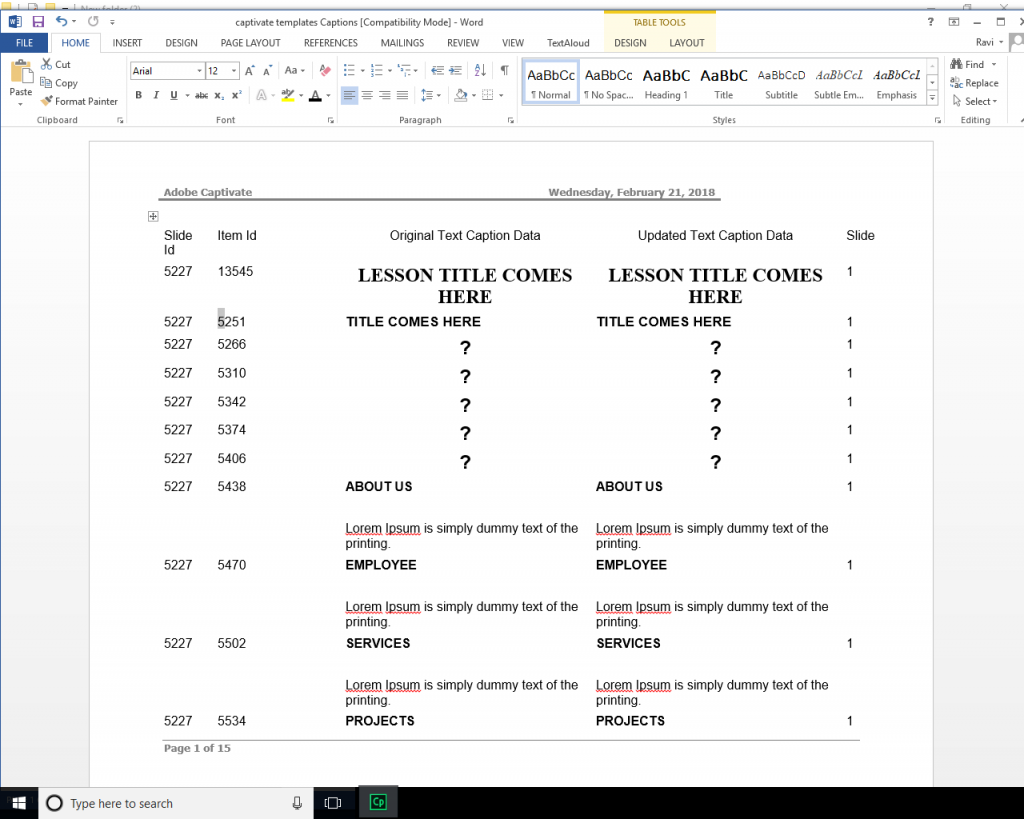Based out of Doha, Qatar, Education Above All is a global foundation committed to providing vulnerable and marginalised people in the developing world with uninterrupted access to quality education.
Currently, the #COVID19 crisis is affecting over half of world’s student population. EAA developed a list of free, multilingual #elearning resources to promote #DistanceLearning during this pandemic: https://t.co/plMD2ez6Mt #LearningNeverStops
— Education Above All Foundation (@EAA_Foundation) March 25, 2020
Nothing explains the power and necessity for localising eLearning resources and courses like this tweet.
The great thing about eLearning is its reach. Your eLearning course can practically reach every person in the world who has a device and access to the internet. That’s a lot of people. But, when you create, publish, and promote your course in one language, you end up limiting your audience.
Before we discuss the benefits of localising courses at length, let us first get a quick understanding of what Adobe Captivate can do for you.
Adobe Captivate is an authoring tool that helps you create mobile-responsive, interaction eLearning courses. It is a very popular tool with a user base that includes professionals looking to share their expertise, global brands looking to provide training for their employees online, and online learning companies looking for an effortless way to create engaging educational courses.
Adobe Captivate’s features
Adobe Captivate helps you create customised courses with these features:
Responsive courses – Responsiveness is essential for any eLearning course as learners may access the course on either their mobile device, a tablet or desktop. A course with a responsive design and format improves the learner’s experience. Adobe Captivate helps you create courses with responsive designs.
Interactive assessment – You get different options for assessing learners’ understanding of your courses, including quizzes. Adobe Captivate also enables you to add certain interactive elements to your assessment, like ‘drag and drop’ and ‘click and reveal’.
Library of templates and assets – This feature is especially great for beginners, saving them the trouble of designing their course from scratch. They can choose from a wide range of assets like images and videos and course templates to create professional-looking and visually engaging eLearning courses.
Benefits of localising your Adobe Captivate courses
Did you know that 19% of Europeans (in 23 EU countries) never browse in a language other than their native language? Localising your eLearning course will increase your learner base considerably. Add to this the fact that Adobe Captivate’s features promote the idea of creating accessible courses. But, the list of benefits doesn’t end here.
Creating a personalised learning experience
Say, you head a global brand and want to create a course for training your employees in communication skills with your company’s clients and partners. Translating and localising this course in the major languages spoken by your employees will get you positive feedback. A personalised experience takes the learner’s language and culture into account and helps him/her the best out of the course.
People learn best in their native language
A study by the University of Chicago says that “using a foreign language reduces mental imagery.” This statement explains why people grasp information and retain it better when they can access it in their native language. Your learners must understand and interpret the information accurately and clearly if your course deals with safety measures or policies like workplace harassment.
Engaging learners with geolocation variables
Geolocation variables are elements in your course that you can customise as per your learner’s location. Say, your course deals with a sub-topic about calculating taxes for local businesses. You must customise currencies and tax rules as per your learner’s location so that they get accurate information that is relevant to them. While location-aware elements can be used to make the course more engaging, it is imperative for courses dealing with topics that require location-specific information.
How does an LSP help you with localising your Adobe Captivate courses
To create an engaging course with Adobe Captivate, you will need to localise many elements – text, images, video captions, video subtitles, interactive elements like quizzes, etc. Localising all these elements is easier said than done. Here’s how an efficient language service provider (LSP) can help you create accessible Adobe Captivate courses effortlessly.
Hassle-free import and export of files in various formats
Adobe Captivate enables you to export your text in a Word file. Translating and localising text in a Word file is challenging; hence, ensure that you choose an LSP that handles translations in a variety of file formats.
Note: A good LSP will ensure that the translator doesn’t change slide ID, item ID, and slide values which instruct the tool to place all elements correctly when the localised text is imported into the project.

Formatting localised text and elements
While Adobe Captivate’s ability to create responsive courses helps manage formatting issues, it doesn’t resolve all issues arising due to the target language. For instance, German usually takes up more space than English. This will create spacing issues in the text. You’ll face similar issues when dealing with right-to-left languages like Arabic and Hebrew.
You’ll need an LSP that completes the localisation cycle by getting QA experts to check the text for such issues. They will solve these issues at their end, so you get a professional-looking, error-free localised course.
Localising images and graphics
Adobe Captivate doesn’t support the export and import of visuals – so images and graphics will need to be localised separately. For this task, you’ll need an LSP that provides you with a combination of design experts, translators, and localisation experts who can take care of all aspects. This saves you the hassle of coordinating with translators and designers to get the project done. Also, you need people who can work efficiently with different designing tools.
Note: Adobe Captivate integrates with Adobe Photoshop so you can create and edit images in Photoshop and use them in Captivate while creating your course.
Consider partnering with an LSP that provides multilingual desktop publishing. This service will help you create multilingual, localised digital material across various formats. Desktop publishing also enables you to maintain a consistent visual brand image in all your company, marketing, and course material.
Localising videos
Depending on your requirement, localising videos can cover various things like captions, subtitles, voice-overs, etc. Adobe Captivate enables you to export audio files for closed captioning. However, if you need subtitles, they must be created outside the tool and added to the videos. In case of subtitles required for narration (say, you have a voice-over guiding your learners throughout the course), you must ensure that you match the timing of subtitles with that of the narration.
This process would require translation and subtitling experts who also possess the technical knowledge to make these elements come together and create a seamless visual learning experience.
SCORM-compliant
The courses and tutorials you create using Adobe Captivate are SCORM-compliant (Shareable Content Object Reference Model). This makes it easy for you to upload these courses to a learning management system (LMS). For instance, if you’re using an LMS for employee training modules, your Adobe Captivate course will have reusable elements that’ll get uploaded to your LMS easily – no changes needed.
Read more about how you can upload an Adobe Captivate project to LMS.
Conclusion
As you see, you require an LSP that provides you with end-to-end localisation services, so you get engaging, interactive Adobe Captivate courses in multiple languages. We, at Translate By Humans, collaborate with designers, translators, subtitling and localising experts not to let your learners’ language and cultural preferences come in the way of their learning.


